Creating an Online Course: Which Methods Should You Use?
- Step 1: Choose and Structure the Course Content
- Step 2: Create the Course Content
- Step 3: Choose a Learning Platform
- Step 4: Promote and Manage Your Course
Creating an online course is a crucial step for any content creator looking to share their expertise with a wide audience. In addition to democratizing access to learning, online courses offer learners unmatched flexibility. However, designing a high-quality course requires careful planning and the use of appropriate tools. In this article, we will guide you through the essential steps to create an online course, from choosing the topic to publishing it on a learning platform. Whether you are a beginner or already familiar with e-learning, this practical guide will provide you with the keys to success.
Here is the solution for creating a paid online course.
Step 1: Choose and Structure Your Course Content
The first step in creating an online course is to clearly define the topic and learning objectives. It’s essential to choose a subject that resonates with your target audience and addresses a specific need. Once the topic is selected, structure the content in a logical and progressive way. Use tools like mind maps to organize your ideas and build a detailed course outline. This planning phase ensures a smooth learning progression and prevents learners from feeling lost during the course.
Step 2: Create the Course Content

Content creation is the most demanding step of the process. Producing videos, texts, quizzes, and other educational resources forms the solid foundation of your course. Use e-learning tools to design interactive and engaging materials. At this stage, make sure to diversify content formats to keep learners interested. For example, alternate between explanatory videos, case studies, and hands-on exercises. The goal is to make learning as dynamic and accessible as possible.
Step 3: Choose a Learning Platform
Once your content is ready, it’s time to publish it online. Choosing the right learning platform is a crucial step. There are several platforms dedicated to online course creation, each offering specific features. Select a platform that fits your needs in terms of delivery, interactivity, and user management. Some platforms also include built-in marketing tools to help promote your course—a valuable asset for reaching a wider audience.
What to Do if I Don’t Have All the Knowledge to Create an Online Course?
It is entirely possible to create an online course even if you don’t have all the necessary knowledge about a specific topic. One effective solution is to collaborate with experts or build a co-creation team. You can also educate yourself on less familiar aspects through online courses, specialized readings, or webinars. Additionally, there are content platforms where you can purchase or outsource the creation of specific modules.
If you prefer personalized support, our team offers a comprehensive program with industry experts, virtual classes. We also offer face-to-face tutoring, as well as support all the way through to certification. We ensure thorough follow-up on deliverables for the jury, guaranteeing a high-quality course ready for certification.
Step 4: Promote and Manage Your Course

The final step is to promote your course and manage its evolution. Use digital marketing techniques to attract potential learners: social media, email marketing, and targeted ads are all powerful tools to leverage. Additionally, it’s important to regularly gather user feedback to continuously improve the content and learning experience. Effective management of an online course also involves tracking learner performance, allowing you to adjust the modules based on identified needs.
Conclusion
Creating an online course is an ambitious yet rewarding project. By following the steps in this practical guide, you can turn your knowledge into an educational product accessible to all. The choice of content, the quality of learning materials, the selection of the learning platform, and promotion efforts are the keys to the success of your online course. By dedicating yourself to each of these steps, you will maximize your chances of creating an engaging and effective course that meets the expectations of your future learners.
1.What are the best practices for structuring content when creating an online course to maximize learner engagement ?
To structure an online course effectively, start by defining clear learning objectives for each module. Then, use e-learning tools to diversify the formats. Also, include interactive activities, such as quizzes, after each section to maintain learner engagement throughout the course. This approach promotes a logical and engaging progression.
2. How to evaluate the effectiveness of my online course and ensure continuous improvement on my learning platform ?
To effectively evaluate your online course, start by using satisfaction surveys and analyzing completion rates. Then, monitor learner performance through your platform. Finally, ensure continuous improvement by making regular adjustments based on feedback and collected data, gradually optimizing the content.
3. What are the essential criteria for choosing a suitable learning platform for creating online courses for my business ?
When choosing a learning platform for your online courses, start by evaluating criteria such as ease of use, customization options, and compatibility with your existing tools. Then, check if it offers robust features for tracking learners and generating reports, while also being adaptable to the growth of your business.

























